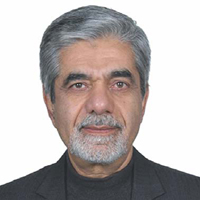Consideration and Analysis of Shiite Topic and Theme in Mahmoud Farshchian’s Paintings
After many years of absence of Shiite topics in Iranian painting, Mahmoud Farshchian experienced them in his works. Farshchian, as one of the most famous painters of contemporary period, built a new experience in creating painting with Shiite topics which was welcomed by the public and affected some of the Iranian painters. As “topic” is one of the important aspects of Iranian painting (Negargari), we considered topic, themes and the visual techniques of the artist as the main issues of this article. The aim of this study is to understand and explain the innovations of the artist in representation of Shiite topics and to provide the contemporary painters and researchers with a self-awareness regarding this aspect of Farshchian’s painting. To address the problem, we need to pose such questions as: what are the topics and themes used by Farshchian? why has he used such themes and how has he represented them or through what techniques he created his works? To answer these questions using an explanatory-analytic method for analysis, many data was gathered through studying and interviewing some painters and professors. The written sources, books and articles include data on biography, education, aspects of his style and his innovations in contemporary Iranian painting. Farshchian who was born in a religious family and trained under a Shiite system of ceremonies such as pilgrimage, mourning and resorting, has deeply affected and founded a Shiite aesthetics of his own. Like his family, especially his mother, he has gained his most effective educational experience in Mirza Emami workshop. Trained by Mirza, Farshchian gradually achieved a vision toward art; a vision which identifies art in relation to theosophy. These two factors have deeply led him to represent Shiite topics with especial characteristics of his own. Moreover, his other masters like Issa Bahadori, and his trips to European countries to study the masterpieces of art in museums have also been influential. Our study and analysis based on data extracted from sources, clarified that the approach he chose and his inclination towards Shiite topics are related to theosophical understanding of art and social condition in which he created his works. Shiite paintings in past schools of Iranian painting like the Ilkhanid, the Timurid and the Safavid schools, were made to identify and defend the Shiite beliefs which were gradually being welcomed by rulers and the public. After many years of absence concluding the Qajar period and the first Pahlavid era in contemporary time, Farshchian has connected Shiite topics to painting. In this connection, the artist has created a new visual identity for Shiite beliefs and topics in harmony to people and the needs of contemporary world to meaning and spirituality. So he has represented Shiite topics with a cultural approach to manifest Shiite collective feelings and meanings concentrated on Imams, because Shiite art cannot be imagined without Imams. On the other hand, based on a theosophical approach, the painter has focused on an empathetic and conceptual representation of Shiite topics about Imams and their status rather than a physical and narrative one. In this approach, Farshchian has put his stress on meaning and feelings. According to this approach, the artist has formed his Shiite themes in two sorts: firstly, themes regarding meanings related to Imams such as birth, martyrdom, asylum, pleading, guardianship, helplessness, orphanage and final coming of Mahdi, and secondly, themes referring to placement of Imam in this world and the world after death, like mediation, substitution, holiness, etc. These topics and themes have been managed through special visual techniques. So, in the realm of form making and visual techniques, Farshchian has used three kinds of composition in harmony with the themes: concentrative, triangular and vertical. These compositions have enabled him to choose and combine visual elements in a significant form. In addition to composition, the artist has applied visual techniques to form the themes of his own. He has reduced decorative elements to let the viewers seek the meaning, he has also used curved and nonfigurative lines to protect the figures and things from materiality. He has handled the colors in a significant way and emptied the space to reduce the physicality of the space as well as emphasizing on meaning and emotions. The way artist has used colors such as white and green is highly in accordance with Shiite beliefs and ceremonies. Such process of creation, helps the Shiite community to unify around Imam which is the core concept of Shiite identity. This function of Shiite works of Farshchian is achieved through the way his works are used and displayed. The museum in which the works are kept is in holly shrine of Imam Reza. Some of his works are used widely in illustration for religious activities.
- حق عضویت دریافتی صرف حمایت از نشریات عضو و نگهداری، تکمیل و توسعه مگیران میشود.
- پرداخت حق اشتراک و دانلود مقالات اجازه بازنشر آن در سایر رسانههای چاپی و دیجیتال را به کاربر نمیدهد.



